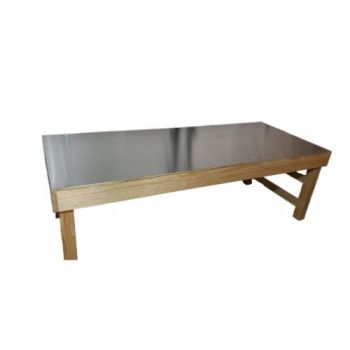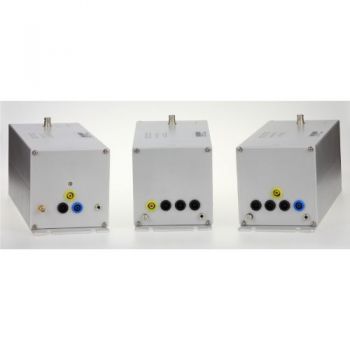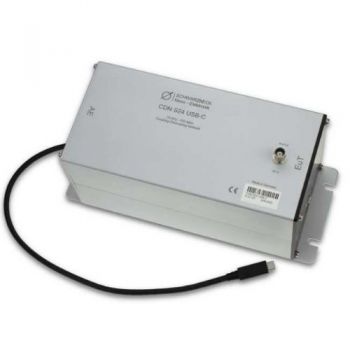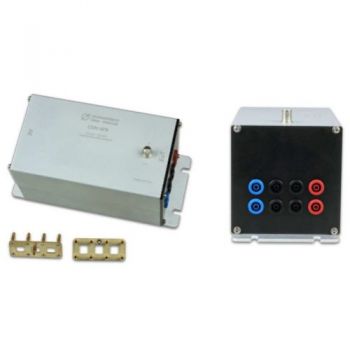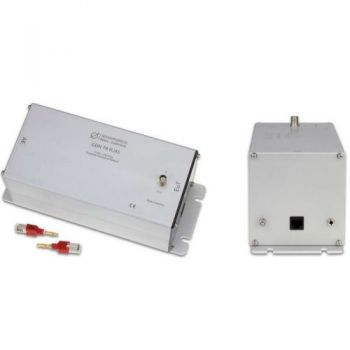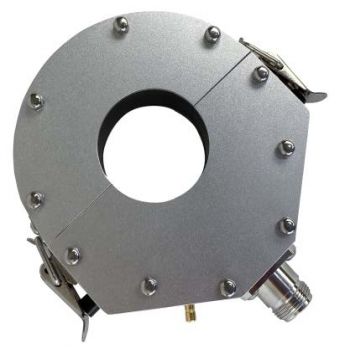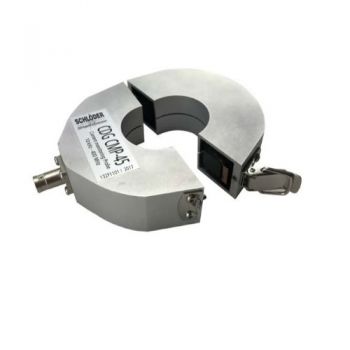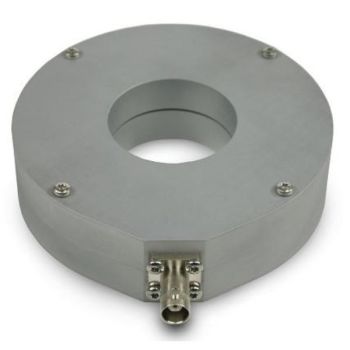Products
The Wood Test Table is a simple, inexpensive solution for your EMC testing. The table is built to be ship flattened to reduce shipping costs and easily assembled on site quickly. The picture is shown with a ground plane.
The Coupling- / Decoupling Networks are used to inject common-mode disturbances to Equipment under Test (EuT). Further, the CDNs provide sufficient decoupling between Auxiliary Equipment (AE) and disturbance signal. The requirements for CDN and their application are described in the standard IEC 61000-4-6 (Immunity to conducted disturbances, induced by radio-frequency fields). CDNs have a common mode impedance of 150 Ohm and are available for a multitude of cable types and connectors.
The Coupling- / Decoupling Networks are used to inject common-mode disturbances to Equipment under Test (EuT). Further, the CDNs provide sufficient decoupling between Auxiliary Equipment (AE) and disturbance signal. The requirements for CDN and their application are described in the standard IEC 61000-4-6 (Immunity to conducted disturbances, induced by radio-frequency fields). CDNs have a common mode impedance of 150 Ohm and are available for a multitude of cable types and connectors.
The Coupling- / Decoupling Networks are used to inject common-mode disturbances to Equipment under Test (EuT). Further, the CDNs provide sufficient decoupling between Auxiliary Equipment (AE) and disturbance signal. The requirements for CDN and their application are described in the standard IEC 61000-4-6 (Immunity to conducted disturbances, induced by radio-frequency fields). CDNs have a common mode impedance of 150 Ohm and are available for a multitude of cable types and connectors.
The Coupling / Decoupling Networks are used to inject common-mode disturbances to Equipment under Test (EuT). Further, the CDNs provide sufficient decoupling between Auxiliary Equipment (AE) and disturbance signal. The requirements for CDN and their application are described in the standard IEC 61000-4-6 (Immunity to conducted disturbances, induced by radio-frequency fields). CDNs have a common mode impedance of 150 Ohm and are available for a multitude of cable types and connectors.
BCI-P1 Bulk Current Injection Probe 10 kHz – 400 MHz - Meets specifications of ISO 11452-4:2005 and IEC 61000-4-6 - Frequency range from 1 MHz up to 400 MHz - Designed for automotive BCI testing - Low insertion loss (1MHz - 400MHz) to test bellow 1MHz (IEC/DO/MIL) see CDN BCI-P1_MT-1
CDN BCI-P1_MT-1 Bulk Current Injection Probe 4 kHz – 400 MHz - Meets specifications of ISO 11452-4:2005, MIL-STD-461, DO-160 and IEC 61000-4-6 - Frequency range from 4 kHz up to 400 MHz - Designed for BCI testing
CDG CMP-45 Current monitoring probe • Cable diameters up to 45 mm • Frequency range 10 kHz to 400 MHz • Foldable, easy positioning on the conductor / cable • For BCI testing acc. to ISO 11452-4 and others • Insertion impedance < 2,5 ?
CDG CMP-46 Current monitoring probe • Cable diameters up to 45 mm • Frequency range 10 kHz to 400 MHz • For BCI testing acc. to ISO 11452-4 and others • Insertion impedance < 2,5 ?

